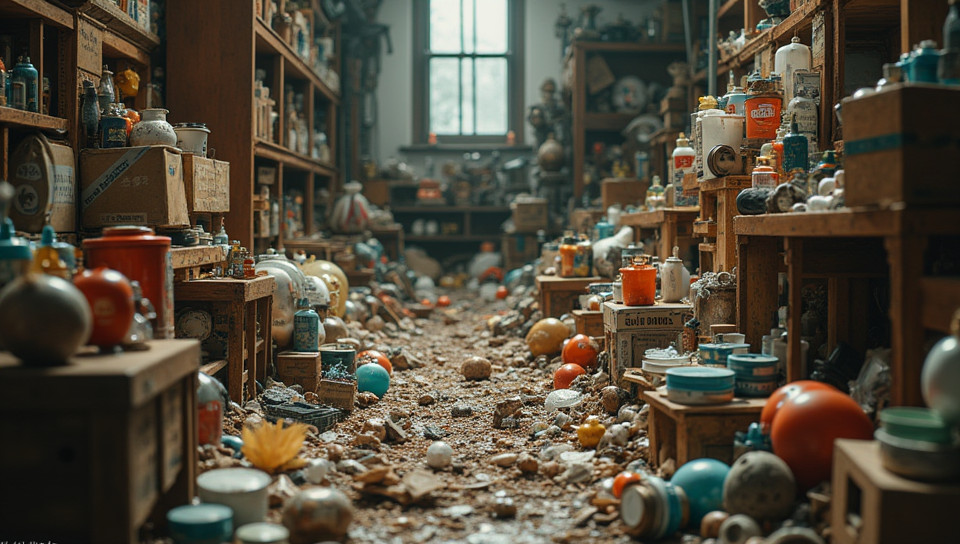Upcycling creates more clutter through unnecessary item processing 57%

The Dark Side of Upcycling: How It Creates More Clutter
In our quest for sustainability and creativity, upcycling has become increasingly popular. We're encouraged to take old items and turn them into something new and useful. However, beneath the surface, this practice may have an unintended consequence: creating more clutter.
The Rise of Upcycling
Upcycling involves transforming discarded materials into higher-value products. It's a great way to reduce waste and promote creativity. Many people enjoy upcycling as a hobby or a way to make their homes more unique. Online platforms, social media, and blogs have made it easier for people to share their upcycled creations, inspiring others to join in.
The Process of Upcycling
Upcycling typically involves several steps:
- Demolition
- Cleaning and preparation
- Designing or planning the new item
- Creating the new item (e.g., painting, gluing, cutting)
- Finishing touches
Each step requires time, effort, and resources. The process can be lengthy and labor-intensive.
The Unintended Consequences of Upcycling
While upcycling may seem like a harmless hobby or creative outlet, it can have unintended consequences:
- It creates unnecessary processing: Each item that is upcycled must be processed, cleaned, and prepared for its new use. This requires time, effort, and resources.
- It perpetuates consumption: Upcycling encourages people to keep buying old items with the intention of transforming them into something new. This can lead to a never-ending cycle of consumption and waste.
- It creates more clutter: In the process of upcycling, many original items are discarded or transformed beyond recognition. This can result in an accumulation of clutter.
Rethinking Our Approach
It's time to rethink our approach to upcycling. Instead of transforming old items into new ones, we should focus on reducing waste and consumption altogether. Here are some alternatives:
- Buy less, use more: Reduce the number of items you buy and make them last longer.
- Repurpose instead of upcycle: Think creatively about how to reuse an item in its current form.
- Donate or recycle: When items can no longer be used, consider donating or recycling them.
Conclusion
Upcycling may seem like a harmless practice, but it has unintended consequences. By creating unnecessary processing and perpetuating consumption, we may be doing more harm than good. It's time to rethink our approach and focus on reducing waste and clutter altogether. By making small changes in our daily lives, we can create a more sustainable future for ourselves and the planet.
- Created by: Ben Fischer
- Created at: Aug. 30, 2024, 11:04 p.m.
- ID: 8595





